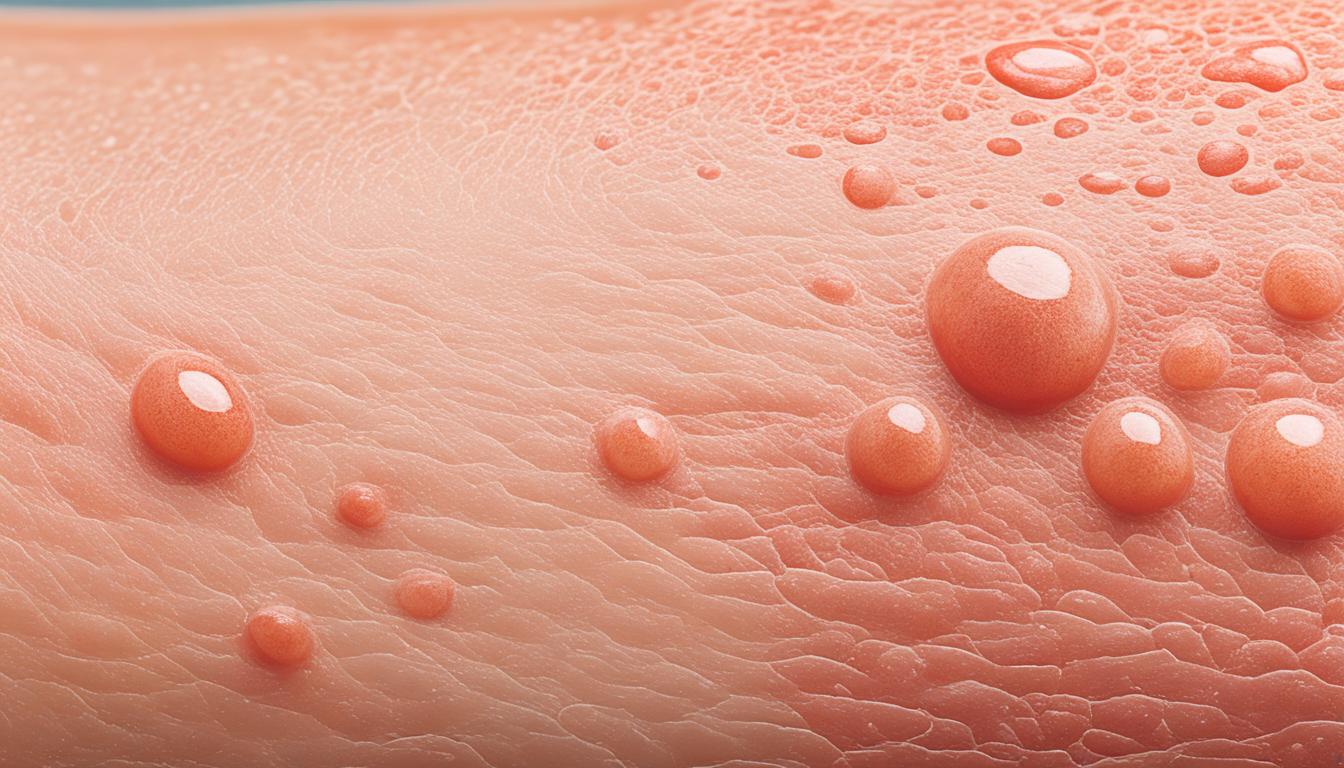Keratosis pilaris, known by many as KP or “chicken skin,” is a common skin issue. It shows up as small bumps on the skin. These bumps feel rough and are caused by too much keratin, a skin protein.
This skin problem is often seen on the cheeks, arms, buttocks, and thighs. It can also happen in other places. Even though keratosis pilaris is not harmful, it can make a person feel uncomfortable or shy. It is usually found in babies, kids, and teenagers.
This skin condition might run in families. It could be more likely if someone already has eczema or dry skin. In some cases, it might be linked to certain medicines or serious skin issues like melanoma.
Diagnosis for keratosis pilaris is usually by a skin specialist. They look at how bad it is and where it shows up. Then, they suggest the best ways to treat it.
Key Takeaways:
- Keratosis pilaris, also known as “chicken skin,” is a common skin condition characterized by small bumps on the skin.
- The bumps are caused by a buildup of keratin, a protective protein in the skin.
- This condition primarily affects the cheeks, arms, buttocks, and thighs.
- Keratosis pilaris is generally harmless but can lead to self-consciousness or discomfort.
- Diagnosis is typically done by a medical dermatology specialist.
Treatment Options for Keratosis Pilaris
The right treatments can lessen bump appearances and make your skin healthier. Let’s look at some effective ways to deal with keratosis pilaris:
Moisturizing Lotions and Medicated Creams
Keeping your skin hydrated is important for managing keratosis pilaris. Moisturizing lotions and medicated creams help with this. They should have ingredients like urea, lactic acid, or salicylic acid to make your skin softer. Apply lotions right after you bathe for the best results.
Exfoliation Techniques
Exfoliating regularly is key for smoother skin when you have keratosis pilaris. It gets rid of dead skin cells and opens up clogged hair follicles. You can use body scrubs, brushes, or acids like salicylic or glycolic acid for exfoliation.
But remember, too much scrubbing can make your condition worse.
Laser Treatments and Dermabrasion
If your case is severe, your dermatologist might suggest laser treatment or dermabrasion. Laser treatments aim to reduce redness and make your skin smoother. Dermabrasion gets rid of the top skin layer to reveal newer skin underneath. Both procedures are done by professionals and may need several visits for the best outcome.
To pick the right treatment, see a dermatologist. They will check how serious your condition is and tell you the best treatment steps. Remember to keep your skincare routine simple, use gentle products, and always moisturize. This will help prevent any skin issues and keep your skin healthy.
Stem Cell Therapy for Keratosis Pilaris
Stem cell therapy is becoming a new and advanced method to treat many skin conditions, keratosis pilaris included. These cells are special because they can change into different types, such as skin cells. This change helps grow new tissue and heal skin.
For keratosis pilaris, the goal of stem cell therapy is to fix the damaged skin cells linked to this condition. This new method has already started to make skin smoother and decrease the bumpy red areas.
Yet, it’s key to remember that stem cell therapy is still growing. We need more studies to be sure it works well over time for keratosis pilaris. It’s wise to talk to a certified skin doctor to check your best options, like stem cell therapy. They can help you find the right treatment plan for you.

